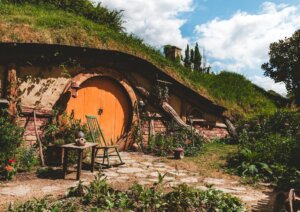I went to school in Christchurch, raised my children there, and taught at an inner city school. I had not been back since the earthquakes, but the time had come.

From the plane window I searched the landscape for broken bits of land, but could see nothing. On the drive from the airport I saw the occasional empty chimney space, the odd fenced off house, a few strips of emergency tape, but I was unprepared for the silent Sunday barrenness of the central city.
I tried to see the Cathedral, where my family has a close connection . The nearest viewpoint was on the Worcester Street bridge, where, through great wire barriers, I had a partial view of broken stone walls.
I longed to get up to the Clarendon corner, where once I  screamed for the Beatles to come out on the balcony, but the warning signs stopped me. I walked through Ballantynes, resilient and snappy, to the bright new pop-up shopping centre , where buskers and flowers and creative window displays embody the new normality.
screamed for the Beatles to come out on the balcony, but the warning signs stopped me. I walked through Ballantynes, resilient and snappy, to the bright new pop-up shopping centre , where buskers and flowers and creative window displays embody the new normality.
Johnson’s the Grocer had a queue outside, and there was hardly an empty seat at the cafes. A nice substitute for the busy buzzy Strip, now gone, and the funky grey stone of the Arts Centre , also beyond reach and dangerous.

On Colombo Street is a peep hole giving another view of Cathedral Square – the fine chalice sculpture still standing in the silence, now more imposing than the sad remains of the Cathedral.
So many parts of the solid neo- Gothic identity are ring-fenced, so much is viewed through wire barriers.
One morning I followed an autumn sunrise to my former home on Bealey Avenue. The brick walls and timber gate still stand, but all they protect is a block of weed covered land, no longer fit for garden parties. Further along, there were other sections roughly bulldozed where I could not recall what used to stand there.
Was it that church? Or that lovely old villa? Remember the old library? And that great tall office block? The buildings are gone, so many of them, and somehow the memory becomes unreliable too.

The vanished buildings create a kind of dementia in the landscape, with its lost pathways and irretrievable characteristics. Nothing will ever be the same again, in a city where each shaky day lived is called a new normality.
To the east of the city centre is the seaside village of Sumner. It was the go to place for beach walks, surfing, hill walks, arty movies and expensive housing. Now the sumptuous houses hang precariously over the shattered cliff edges, while the shaken off boulders lie beside the homes and buildings they have wrecked. My favourite pizzeria has gone, the access to the road to Lyttelton is closed, and half of Shag Rock is in the sea.
But the question for the traveller is whether to go or not. A short answer is yes. Yes, do go to see how movements of the Earth’s thin crust can wreak breath taking damage, to see how the most established city in New Zealand can be so radically transformed. , and to see how the new Christchurch is beginning to emerge from people’s wishes for a new future.

Beyond that, and apart from the widespread damage, there are still fascinating places to go, wonderful things to do, and other places to explore. And most important of all are the people, who are still there, still living, working, loving and building their lives. They talk of a new awareness of community, a new valuing of neighbours and friends, and an emerging sense of being in the vanguard of a new way of living. Go and see for yourselves.
www.christchurchnz.com


I visited Christchurch for the first time since the quakes a month ago. I was glad I did. To experience a little of what we have lost, the cracks remaining in so many homes and lives, and to see a new city trying to emerge. Kia Kaha Christchurch